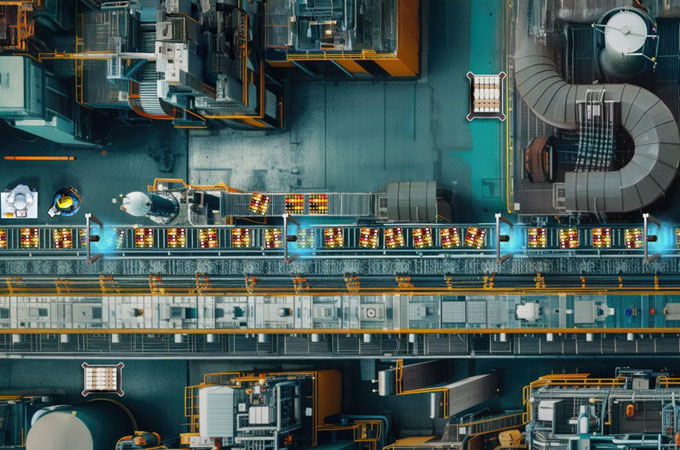
Zebra Technologies Corporation, a global leader in digitising and automating frontline workflows, today (April 3) announced that manufacturing leaders are set to gain strategic ‘connected factory’ insights to future-proof and advance their organisations for Industry 4.0.
The Connected Factory Framework by Zebra Technologies focuses on three important pillars for transformation and growth: actional visibility, optimised quality, and an augmented workforce.
"A finely tuned strategy that aligns leadership and resources must be a top priority for decision-makers to achieve connected factories that seamlessly capture, analyse, and share real-time data insights from frontline workers and machines,” said Ryan Martin, Senior Research Director, ABI Research.
"Digital transformation priorities are becoming more practical, with robust deployments of AI solutions widening the competitive gap among manufacturers. These AI solutions benefit labour training and retention, quality inspection, supply chain resilience, and intelligent automation," he stated.
The framework will be shared with an audience of customers, partners, journalists, and analysts attending Hannover Messe, Germany.
The Messe is a key moment in the industrial technology calendar, attracting over 130,000 visitors from 150 countries, 4,000 exhibiting companies, 300 startups and over 300 economic and political delegations last year.
The framework will be brought to life with a range of complementary solution demos at Zebra’s booth covering machine vision, 3D scanning, rugged devices, wearable computers, workforce communication software, radio frequency identification and kiosk solutions.
The Connected Factory responds to the current needs and future plans of manufacturing leaders and equips C-suite, IT and operational technology (OT) decision-makers with the guidance and solutions to meet their goals.
"However, alignment is needed among executives, as our Manufacturing Vision Study [DB8] research shows that 38% of C-suite, 42% of IT, and 45% of OT leaders say they are the primary driver of factory workforce technology," remarked Stephan Pottel, the Strategy Director, Manufacturing EMEA, Zebra Technologies.
"While they share many similar concerns across digitalisation and intelligent automation, asset and inventory visibility, productivity, and labour, there needs to be clearer agreement about strategic ownership, which is why we have introduced this framework," said Pottel.
The framework is being shared with an audience of customers, partners, journalists, and analysts attending Hannover Messe, Germany.
The Messe is a key moment in the industrial technology calendar, attracting over 130,000 visitors from 150 countries, 4,000 exhibiting companies, 300 startups and over 300 economic and political delegations last year, he added.
According to Zebra’s study, 67% of manufacturing leaders say don’t know how to start the process of digitally transforming the plant floor.
Key barriers to digital transformation include identifying which business challenges or plant floor areas to start with, costs and availability of resources, and scalability of projects from pilot to organisation-wide implementation.
Yet 89% plan to increase technology and physical infrastructure investments, with 22% looking to increase their technology investments by 10%, and 43% looking to increase their infrastructure investment by 6-10%. Additionally, 80% plan to increase their investment in staffing, with 32% looking to increase their spend by 6-10%.
"These are promising and ambitious investment plans, but without clear strategic alignment across leadership and knowing how and where to begin and resource and scale projects, there could be a risk of wasted budgets and poor execution," stated Pottel. "The Connected Factory framework can help,” he added.
